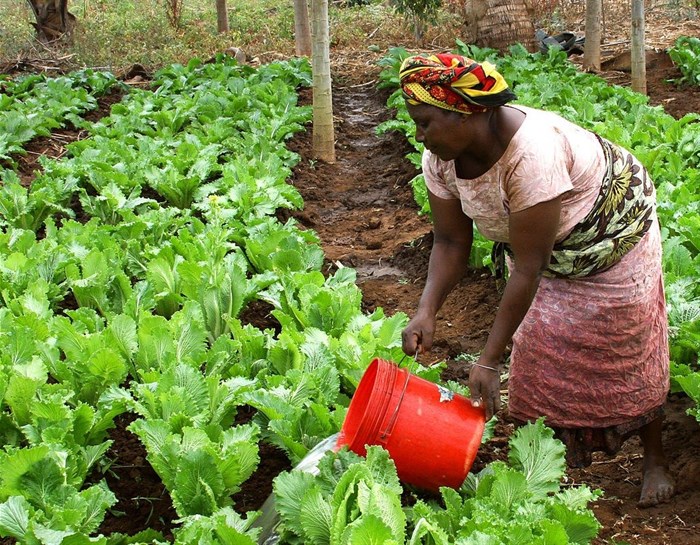Despite increased efforts to expand irrigation in Tanzania, the country is still well below its declared target of one million hectares of irrigated land. Or is it?
New research reveals that official statistics often don’t include irrigation set up run by individual farmers. This would appear to be good news, but very little is known about this under-the-radar irrigation. The big question for policymakers now is how to respond.
Over the past decade, efforts to boost irrigation in Africa have increased significantly in response to a variety of issues. These include ongoing low productivity, rising food prices, and growing concerns that climate change will impact Africa’s already unpredictable weather. This could have a knock-on effect on agriculture.
Tanzania’s irrigation development exemplifies this trend. The total area of irrigated land doubled between 2004 and 2014. This promises big increases in food security. Crop yields are estimated to be two to four times higher on irrigated than non-irrigated land. Irrigated agriculture already contributes to 24% of Tanzania’s national food requirements from only 4% of the country’s total cultivated land area.
The government has shown commitment to ambitious expansion with the implementation of a National Irrigation Policy in 2010 and passing of the National Irrigation Act in 2013.
Yet according to the Tanzanian National Irrigation Commission, the country is still well below its target of one million hectares, with only 46% of this currently irrigated.
One explanation for this is that there simply isn’t enough irrigation development going on due to funding and implementation constraints. Lack of government budget is a key barrier.
But even newer funding and operating models such as public-private partnerships come with their own problems. The positives of these partnerships are counter-weighed by challenges such as a lack of experience in negotiating with commercial partners, difficulties in negotiating access to large areas of land typically expected by private investors, and banks’ reluctance to fund investment in the sector.
But there’s also another possible interpretation: that there isn’t actually that much of a lag – and it’s actually more a question of inaccurate irrigation data.
Irrigating under the radar
New research has revealed that Tanzania’s official statistics on irrigation often don’t include initiatives set up and run by individual farmers. This is either because they’re not aware of it, or because they don’t consider it to have much potential.
Compared to formally engineered projects, this ‘farmer-led’ irrigation is often small-scale and interspersed among non-irrigated fields. This makes it harder to record. It also takes diverse forms. These range from watering via pumps, wells, flooded valley bottoms, or even via stream diversions or small dams.
The same research shows that farmer-led irrigation is in fact flourishing. It reveals that the area of suitable irrigated farmland is much larger than typically thought. It could be as much as 10-20% larger for rice-growing areas, for example.
And it’s not just the case in Tanzania. Research from Mozambique indicates that irrigated areas might be double the officially recognised area if farmer-led irrigation is included, and similar observations are emerging from Zimbabwe.
Responding to farmer-led irrigation
From a crop productivity point of view, this is good news. It indicates that Tanzania is actually much closer than expected to its national target of one million hectares of land irrigated. But it also raises new questions.
First, it’s likely that the undocumented irrigation uncovered is only the tip of the iceberg. So, what is the best way to capture more detail on where and how small-scale farmers are irrigating?
Satellite imagery analysis is a possible solution. It has already produced striking findings suggesting that across Sub-Saharan Africa irrigation may be two to three times greater than previously thought. In some countries, such as Ethiopia, it’s very much greater.
More importantly, perhaps, it raises questions about how governments should respond to farmer-led irrigation. Should it be supported, and incorporated into official irrigation strategy, or approached with caution?
At the moment, it’s hard to say. Although this type of irrigation is slowly becoming more visible to official eyes, understanding of its social, economic and hydrological impacts is still very limited. It may increase crop yields, but at what cost? For example, does it benefit everyone in a given community or just a few individuals? How do women and non-locals fare? Is it environmentally sustainable?
It’s vital that government officials charged with meeting Tanzania’s irrigation target look into these questions. They could start by mapping out where and how farmer-led irrigation is happening. Only then can they make the best decisions about whether or how to embrace farmer-led irrigation.

This article was originally published on The Conversation. Read the original article.














